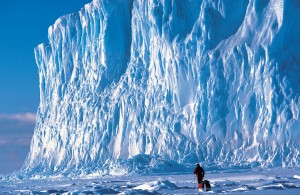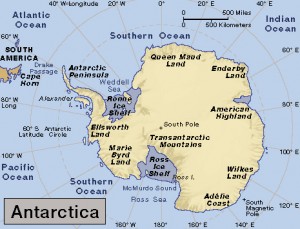Antarctica with a Side of SALSA
Wednesday, October 9th, 2019October 9, 2019
Antarctica is the coldest, highest, brightest, driest, and windiest continent on Earth. It also the least explored, and there is little knowledge of what lies beneath Antarctica’s many glaciers. In late 2018 and early 2019, however, the Subglacial Antarctic Lakes Scientific Access (SALSA) project began digging beneath the ice, hoping to learn more about the biome (collection of living things) in West Antarctica’s subglacial Mercer Lake.

Antarctica is covered by huge, thick glaciers called ice sheets. Scientists are beginning to learn more about life beneath the ice. Credit: © Roger Mear, Stone/Getty Images
Ice and snow cover 98 percent of Antarctica. High mountain peaks and a few other bare rocky areas make up the only visible land. Underneath the ice lie features similar to those on other continents, including mountains, lowlands, valleys, and even lakes and rivers. Mercer Lake lies beneath a massive ice sheet near the South Pole. Global warming is reducing Mercer Lake’s protective ice layer, however, and the unique subglacial habitat may soon change or even cease to exist.
The United States Antarctic Integrated System Science Program and the National Science Foundation’s Office of Polar Programs created SALSA to study Antarctica’s subglacial environment. In December 2018 and January 2019, a SALSA team of 50 scientists, drillers, and support staff was deployed to the area above Mercer Lake. Using a high-pressure, hot-water drill, the team probed 4,000 feet (1.2 kilometers) into the ice. The team used a device called a corer to raise water, ice, and sediment from the lake and filter pumps to trap small particles. Sediment samples contained the ancient remains of bacteria, crustaceans, water bears (tardigrades), diatoms (microscopic algae), plants, and fungi. Radiocarbon dating will eventually establish the age of these remains, but they are most likely millions of years old. DNA sequencing will determine if the crustaceans belonged to marine or freshwater species.
SALSA scientists explained that the ancient organisms reached cold, dark, and isolated Mercer Lake through the transfer of water beneath Antarctica’s ice sheets. Mercer and other lakes there gain and lose water on a regular basis (over decades or centuries). Organisms in the water are passed among subglacial lakes and streams and from nearby ocean bays. Antarctica has more than 300 subglacial lakes, and nearly half of those lakes periodically drain and fill.
Subglacial lakes are extremely salty, permanently dark environments with water temperatures below the normal freezing point of water. Studying the evolution of life in such extreme environments on Earth helps inform our understanding of the possibility of life on Mars and other celestial bodies. If life exists on Mars, it could likely be found in such subglacial lakes.



